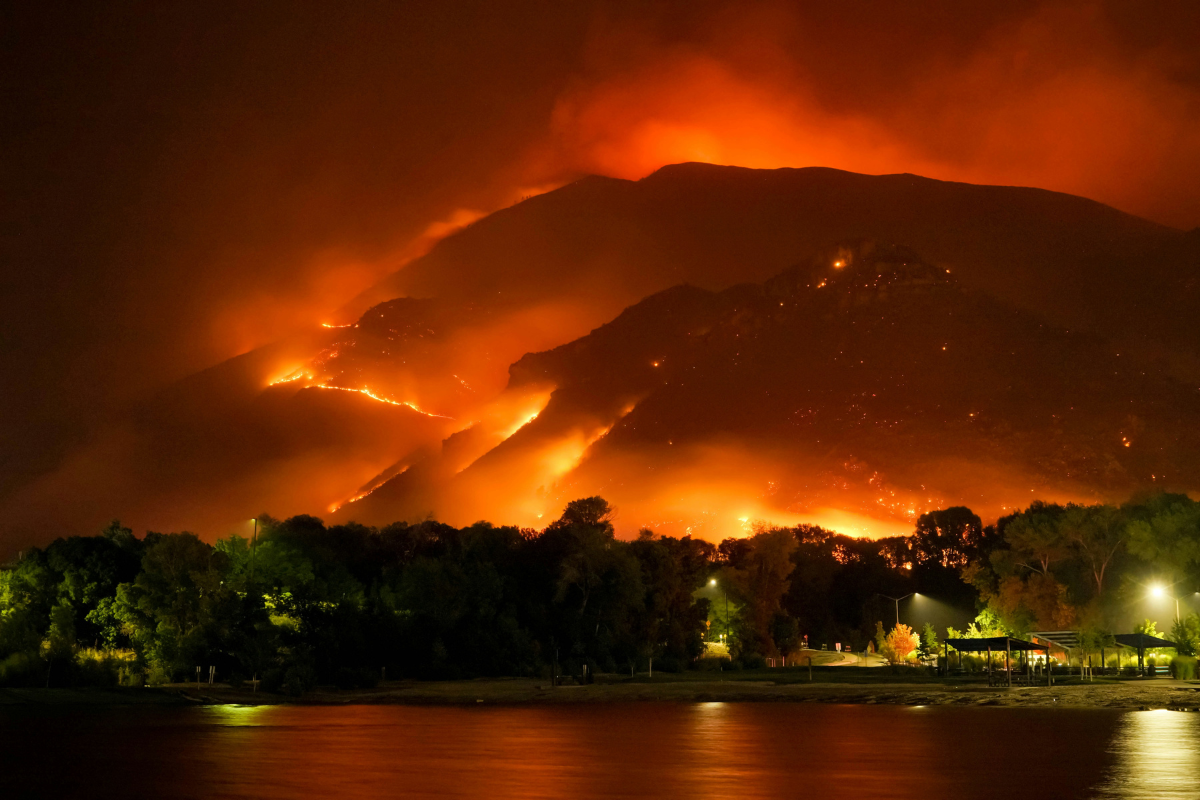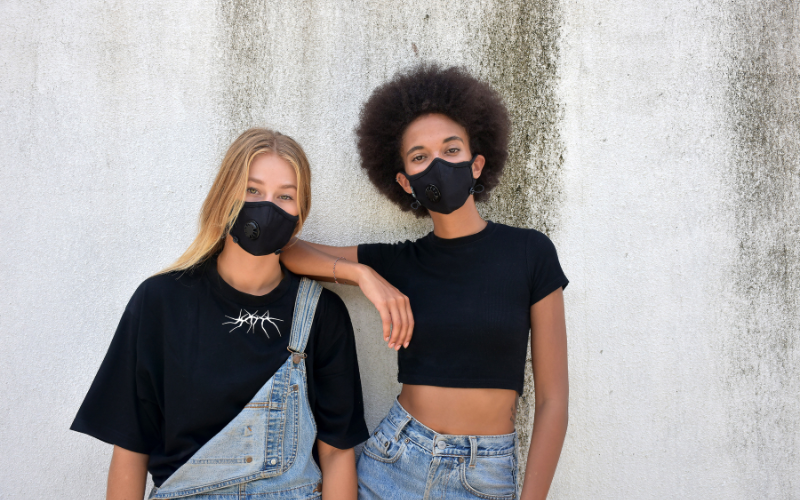
Wildfire Season in the USA: Top States Affected and the Importance of Smoke Masks
Wildfire season in the USA has become a significant concern for many Americans. Each year, wildfires destroy vast areas of land, displace communities, and impact air quality and public health. This blog will explore the time of the year when the risk for wildfires is highest, identify the top five states most affected, discuss the impact of wildfire smoke, highlight the benefits of wearing a smoke mask, and explain why Cambridge Masks are particularly suitable for protecting against wildfire smoke.

When is the Risk for Wildfires Highest?
Wildfires can occur year-round in the USA, but the risk is significantly higher during the late summer and early fall months. This period, typically from June to October, sees the highest wildfire activity due to the combination of dry weather, high temperatures, and strong winds. During these months, vegetation becomes dry and more susceptible to ignition, leading to an increased frequency of wildfires.
Climate change has exacerbated this risk, leading to longer and more intense wildfire seasons. Warmer temperatures and prolonged droughts create ideal conditions for wildfires to start and spread. Understanding the seasonal patterns and contributing factors can help residents and authorities better prepare and respond to wildfire threats.
Top 5 States in the USA Most Affected by Wildfire Season
1. California
California is notorious for its devastating wildfires. The state's hot, dry summers and strong Santa Ana winds create the perfect conditions for wildfires to ignite and spread rapidly. California's diverse terrain, ranging from dense forests to chaparral-covered hills, provides ample fire fuel. Major wildfires in recent years, such as the Camp Fire and the Woolsey Fire, have highlighted the state's vulnerability.
2. Oregon
Oregon has seen a significant increase in wildfire activity, particularly in its forested regions. Dry summer conditions and the state's extensive forests make Oregon susceptible to large wildfires. In recent years, wildfires like the Bootleg Fire have caused widespread damage and forced evacuations, underscoring the growing wildfire threat in the state.
3. Washington
Washington's wildfire season has become increasingly severe. The state's dense forests and dry summer months contribute to frequent wildfires. The combination of dry conditions, lightning strikes, and human activities can ignite fires that spread rapidly. The 2020 wildfire season was particularly challenging for Washington, with numerous large fires impacting air quality and public health.
4. Arizona
Arizona's arid climate and dry vegetation make it a hotspot for wildfires, especially in the summer months. The state's hot temperatures and frequent lightning storms contribute to the ignition of wildfires. The 2021 wildfire season saw several large fires, such as the Telegraph and Mescal Fires, which burned vast areas and posed significant challenges to firefighting efforts.
5. Colorado
Colorado's mountainous terrain and forests are highly susceptible to wildfires, particularly during periods of drought. The state experiences dry conditions and high winds, which can quickly spread wildfires across vast areas. The 2020 wildfire season was one of the worst in Colorado's history, with the Cameron Peak Fire becoming the largest wildfire in the state's recorded history.

The Impact of Smoke from Wildfires
Wildfire smoke is a mix of gases and fine particles from burning vegetation, building materials, and other organic substances. The smoke from wildfires can travel long distances and have serious health impacts, even in areas far from the fire itself. Here are some of the key health impacts of wildfire smoke:
Respiratory Issues
Smoke inhalation can irritate the respiratory tract, leading to coughing, throat irritation, and shortness of breath. Fine particulate matter (PM2.5) can penetrate deep into the lungs, exacerbating asthma, bronchitis, and other respiratory conditions.
Cardiovascular Problems
Fine particles from wildfire smoke can enter the bloodstream and affect heart function, potentially causing heart attacks or worsening pre-existing heart conditions. Studies have shown a correlation between exposure to wildfire smoke and an increase in hospital admissions for cardiovascular issues.
Eye Irritation
Smoke can cause burning eyes, runny nose, and other sinus-related issues. The fine particles and gases in smoke can irritate the eyes and mucous membranes, leading to discomfort and potential infections.
Worsening of Chronic Conditions
People with asthma, chronic obstructive pulmonary disease (COPD), or other chronic health conditions may experience aggravated symptoms due to wildfire smoke. The presence of fine particles and toxic gases can trigger flare-ups and exacerbate existing health issues.
Impact on Vulnerable Populations
Children, the elderly, and individuals with pre-existing health conditions are particularly vulnerable to the harmful effects of wildfire smoke. Pregnant women are also at risk, as exposure to smoke can affect fetal development and lead to adverse birth outcomes.

Benefits of Wearing a Smoke Mask During Wildfire Season
Wearing a smoke mask, also known as a pollution mask, can provide significant protection against the harmful effects of wildfire smoke. Here are some benefits:
Filtering Particles
Smoke masks can filter out fine particulate matter (PM2.5) that can penetrate deep into the lungs and cause health issues. High-quality masks can remove up to 95% of these harmful particles, reducing the risk of respiratory and cardiovascular problems.
Reducing Inhalation of Toxic Gases
High-quality smoke masks can also reduce the inhalation of toxic gases produced by wildfires, such as carbon monoxide and volatile organic compounds (VOCs). These gases can have severe health impacts, and filtering them out can protect against immediate and long-term health risks.
Protection for Vulnerable Populations
Masks are especially beneficial for children, the elderly, and individuals with pre-existing health conditions who are more susceptible to the harmful effects of smoke. Providing masks to these vulnerable populations can help mitigate health risks and improve overall well-being during wildfire season.
Improving Quality of Life
Wearing a smoke mask can significantly improve the quality of life for individuals living in areas affected by wildfire smoke. By reducing exposure to harmful particles and gases, masks can help people continue their daily activities with less discomfort and health risks.
Why Cambridge Masks are Suitable for Wildfire Smoke
Cambridge Masks are designed with advanced filtration technology that makes them highly effective against wildfire smoke. Here’s why they stand out:
Three-Layer Filtration
Cambridge Masks use a triple-layer filtration system that includes a particulate filter, a carbon filter, and a valve. This combination effectively filters out PM2.5 particles, bacteria, and viruses. The particulate filter captures fine particles, the carbon filter adsorbs toxic gases, and the valve ensures easy exhalation, reducing heat and moisture buildup inside the mask.
Comfort and Fit
These masks are designed to provide a snug fit, ensuring that unfiltered air does not seep in through the sides. They come in various sizes and are adjustable, making them comfortable to wear for extended periods. The masks are made from soft, breathable materials that reduce irritation and enhance comfort.
Reusable and Durable
Unlike disposable masks, Cambridge Masks are reusable and can last for several months with proper care, making them a cost-effective solution for protecting against wildfire smoke. The masks can be washed and maintained, ensuring consistent protection throughout wildfire season.
Certified Protection
Cambridge Masks meet international standards for respiratory protection, providing users with reliable and tested protection against smoke and other pollutants. They are certified to filter out 99.6% of particles and 99.7% of viruses and bacteria, making them a trustworthy choice for health and safety.
Conclusion
Wildfire season in the USA is a growing concern, with states like California, Oregon, Washington, Arizona, and Colorado being the most affected. The health impacts of wildfire smoke are significant, making it essential to take protective measures. Wearing a smoke mask, particularly one with advanced filtration technology like Cambridge Masks, can provide substantial protection against the harmful effects of wildfire smoke.
Understanding the risks and being prepared can help mitigate the impact of wildfires on health and well-being. Investing in a high-quality smoke mask is a proactive step toward protecting yourself and your loved ones during wildfire season. Stay informed, stay prepared, and stay safe.
For more information on protecting yourself during wildfire season and to explore high-quality smoke masks, visit Cambridge Mask.
Stay safe and breathe easier!


